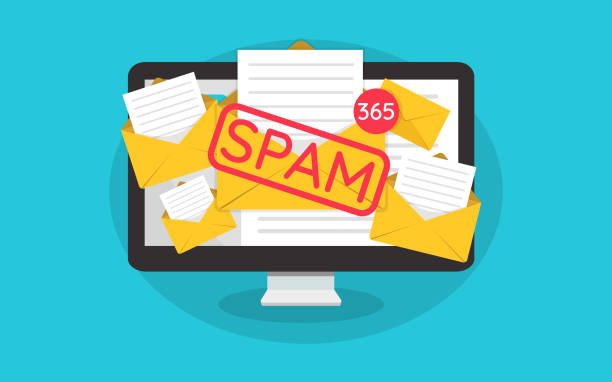Whether it's Gmail, Yahoo Mail, or even Hotmail, in 2022, it's very likely that you've all had an electronic mailbox – sometimes called webmail – for a very long time. And like everyone with an email box, you've probably woken up one day with spam in your mailbox.
So yes I grant you we are all the same and quite frankly, who likes receiving spam in their mailbox? I see some at the back of the room looking at me strangely as if to say: “I should know what this is or I missed an episode… what is spam”.
What is spam?

Well, dear friend, spam is the unwanted mail that you receive in your mailbox without, by definition, having asked anyone for anything...
So why is this a problem? Simply because unsolicited emails can contain malware, serve as phishing tools – including an open door to web scams – or simply clutter your inbox with newsletters you don't want or more… As a reminder, nearly 85% of emails sent are spam, which represents around 120 billion messages per day.
How to avoid receiving spam emails?

And you are wise to ask the question, because before even wondering how you can block unwanted messages in your email, you might already wonder how not to receive them at all. So follow these few tips:
- When browsing a website, always read the fine print of the terms and conditions. You may unwittingly leave an automatic subscription option to a newsletter or any other promotional information letter checked. So before going any further, uncheck these boxes.
- Only trust verified senders. If you voluntarily wish to receive newsletters and other promotional messages, make sure they are from reputable brands. Trustworthy companies don't spam their subscribers and are less likely to be involved in a data breach.
- Never respond to suspicious messages. You may be tempted to respond to tempting emails that try to make you believe that you have won a prize or to senders pretending to be your bank and who explain to you that they need the secret code of your card blue to verify that it's really you even though you haven't asked for anything: don't do any of that and don't even try to click on the subject of the email. In any case, these are spammers trying to abuse your trust to extract money and/or sensitive information…
- Do not write to spammers asking them to stop sending you messages. It would be best not to agitate them.
This article might interest you: 4 simple tips to secure your Gmail inbox
How to block spam emails?

Do you want to know how to actually block the next spam emails arriving in your mailbox? Follow the leader !
How to block emails on Gmail?
Via Web Browser
- Click on the sender's message to block
- Click on the three dots in the top right corner
- Select "Block"
Via the Application
- Open the email from the sender to block
- Click on the three dots in the top right corner
- Select "Block the sender"
How to block emails on Hotmail?
- "Home"> "Settings"> "Show all outlook settings"
- "Email"> "Mail unwanted"> "Filters"
- Type the sender's name in the "Blocked sender" field
How to block emails on Outlook?

Via Web Browser
- Open the message from the sender to block
- Click on the three dots in the upper right corner
- " To block "
Via the Application
- Open an email from the person to block
- Tap the three dots at the top right
- "Move towards spam".
Via the Office
- Right click on the email of the person to block
- "Mail unwanted"> "Block the sender".
How to block emails on Yahoo?
Via Web Browser
- Open an email from the sender to block
- Click on the three dots at the top of the email
- "Block the sender"
Via the Application
- Tap the menu icon at the top left
- "Tools"> "Filters".
- Press the “+” in the top right corner
- Choose a name for the new spam filter
- Type the email address to block in the "sender" field
How to block emails on iPhone?
- Open the “Mail” app
- Open an email from the sender to block
- Touch the sender name
- Tap the email address in the header
- "Block this contact".
- Confirm
Other tips to avoid receiving spam in your mailbox

Use a disposable email address
Another technique used by tech-savvy people is to use a different email address when they sign up for new websites. This is called a disposable email address and it is not linked to your personal accounts. When its security is compromised, you can simply abandon this email address: it will not pose a risk to your other online accounts.
Do not reveal your private email address on public domain websites or social media groups
Bots, spammers and scanners are always on the lookout for easily accessible email addresses online. If you still want to post your email address on social media, you can limit who can see it to only certain contacts.
Get cybersecurity software
The safest barrier known to date, cybersecurity software is able to proactively send you alerts and protect all aspects of your digital life, especially your webmail.
Read also: Gmail: disconnect your account remotely to protect your privacy
What is cold email?

A tip for writing a cold email ? Advertising professionals like those in the IT sector believe in the power of cold emailing. Find out why it's important.
A cold email is a first email that is sent to an unknown recipient – perhaps you – with the aim of obtaining a commercial advantage.
In summary, when you send an email to someone you don't know for a particular reason, it's cold emailing. The goal of these emails is to build a relationship with the prospect – possible future customer – and move them forward through what is called a sales funnel.
A quick and easy example of a cold email could be the one that's in your inbox right now. Someone specializing in a particular field may have contacted you for a product demo or wanted to connect with you for a particular reason.




